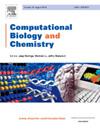Pinpointing potent hits for cancer immunotherapy targeting the TIGIT/PVR pathway using the XGBoost model, centroid-based virtual screening, and MD simulation
IF 2.6
4区 生物学
Q2 BIOLOGY
引用次数: 0
Abstract
T cell immunoreceptor with immunoglobulin and ITIM domain (TIGIT) is one of the most promising targets for cancer immunotherapy. The combination of TIGIT and poliovirus receptor (PVR), which is highly expressed on the tumor surface, inhibits the killing of tumor cells by immune cells. Although antibody blocking the PVR/TIGIT immune checkpoint has shown encouraging anti-tumor effects, small molecules targeting TIGIT to block PVR/TIGIT have not yet been studied. In this study, diverse computational approaches were employed to identify potential inhibitors of this therapeutic targets. First, virtual alanine scanning was used to identify hotspot residues of TIGIT that were effective inhibitory sites. Second, the Extreme Gradient Boosting (XGBoost) classification model and the RO4 rule were used to initially exclude negative compounds. Then, centroid-based virtual screening was used in combination with absorption, distribution, metabolism, excretion, and toxicity (ADMET) prediction to identify the four most promising candidate molecules. Molecular dynamics simulation trajectory analysis showed stable dynamic behavior of the candidate molecules and proteins. Molecular mechanics and Poisson-Boltzmann surface area (MMPBSA) calculations showed that MCULE-5939418698 had the lowest binding free energy (-39.79 kcal/mol). Binding-conformation and energy-decomposition analyses indicated significant involvement of residues L47, Q53, V54 and N58 in inhibitor binding. Principal component analysis and free energy landscape analysis further demonstrated that the binding of MCULE-4861917955 made the system thermodynamically more favorable. Thus, we screened potential inhibitors targeting TIGIT and provide a fresh pipeline for future drug screening research.
利用XGBoost模型、基于质心的虚拟筛选和MD模拟,精确定位针对TIGIT/PVR通路的癌症免疫治疗的有效靶点
具有免疫球蛋白和ITIM结构域的T细胞免疫受体(TIGIT)是肿瘤免疫治疗中最有前途的靶点之一。TIGIT与肿瘤表面高表达的脊髓灰质炎病毒受体(PVR)结合,可抑制免疫细胞对肿瘤细胞的杀伤作用。虽然抗体阻断PVR/TIGIT免疫检查点已显示出令人鼓舞的抗肿瘤作用,但靶向TIGIT阻断PVR/TIGIT的小分子尚未被研究。在这项研究中,采用了多种计算方法来确定这种治疗靶点的潜在抑制剂。首先,使用虚拟丙氨酸扫描来识别TIGIT的有效抑制位点热点残基。其次,利用极限梯度增强(Extreme Gradient Boosting, XGBoost)分类模型和RO4规则初步排除阴性化合物。然后,使用基于质心的虚拟筛选结合吸收、分布、代谢、排泄和毒性(ADMET)预测来确定四个最有希望的候选分子。分子动力学模拟轨迹分析表明候选分子和蛋白质具有稳定的动力学行为。分子力学和泊松-玻尔兹曼表面积(MMPBSA)计算表明,MCULE-5939418698具有最低的结合自由能(-39.79 kcal/mol)。结合构象和能量分解分析表明,残基L47、Q53、V54和N58显著参与了抑制剂的结合。主成分分析和自由能景观分析进一步表明,MCULE-4861917955的结合使体系热力学更加有利。因此,我们筛选了潜在的靶向TIGIT的抑制剂,为未来的药物筛选研究提供了新的途径。
本文章由计算机程序翻译,如有差异,请以英文原文为准。
求助全文
约1分钟内获得全文
求助全文
来源期刊

Computational Biology and Chemistry
生物-计算机:跨学科应用
CiteScore
6.10
自引率
3.20%
发文量
142
审稿时长
24 days
期刊介绍:
Computational Biology and Chemistry publishes original research papers and review articles in all areas of computational life sciences. High quality research contributions with a major computational component in the areas of nucleic acid and protein sequence research, molecular evolution, molecular genetics (functional genomics and proteomics), theory and practice of either biology-specific or chemical-biology-specific modeling, and structural biology of nucleic acids and proteins are particularly welcome. Exceptionally high quality research work in bioinformatics, systems biology, ecology, computational pharmacology, metabolism, biomedical engineering, epidemiology, and statistical genetics will also be considered.
Given their inherent uncertainty, protein modeling and molecular docking studies should be thoroughly validated. In the absence of experimental results for validation, the use of molecular dynamics simulations along with detailed free energy calculations, for example, should be used as complementary techniques to support the major conclusions. Submissions of premature modeling exercises without additional biological insights will not be considered.
Review articles will generally be commissioned by the editors and should not be submitted to the journal without explicit invitation. However prospective authors are welcome to send a brief (one to three pages) synopsis, which will be evaluated by the editors.
 求助内容:
求助内容: 应助结果提醒方式:
应助结果提醒方式:


